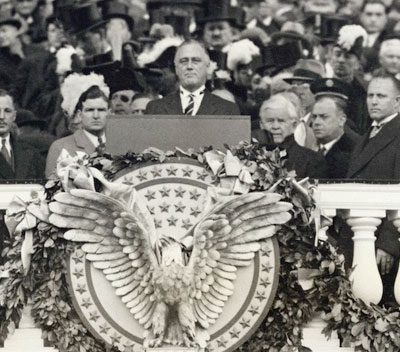Topic: Franklin D. Roosevelt
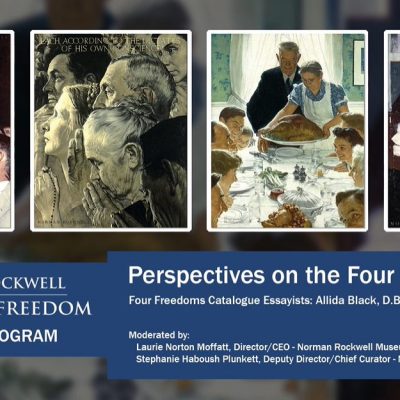
VIDEO: Imagining Freedom: Perspectives on the Four Freedoms
Recorded: October 23, 2020
https://www.rockwellfourfreedoms.org
Join three Imagining Freedom catalogue authors – outstanding scholars who will bring little known aspects of the Four Freedoms and Rockwell’s famed paintings into view. What did these stand for in their time? How did they shape perception and generate support for the war effort? Who were they speaking to and who was left out? What do they mean to us today?
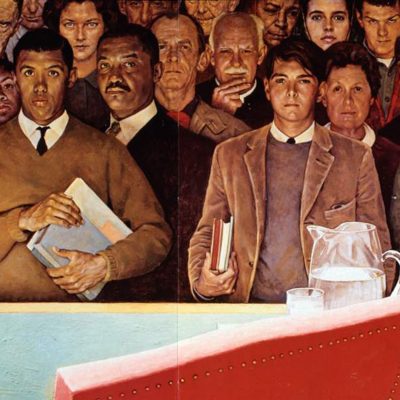
VIDEO: Imagining Freedom: Curator Preview
This video is a production of Norman Rockwell Museum. © 2020 Norman Rockwell Museum. All Rights Reserved.
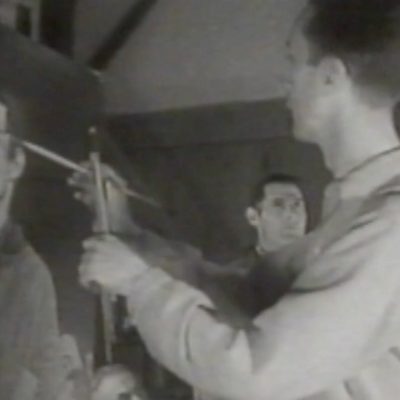
VIDEO: Norman Rockwell’s Four Freedoms
In the spring of 1942, Norman Rockwell was working on a piece commissioned by the Ordnance Department of the US Army, a painting of a machine gunner in need of ammunition.
Posters featuring Let’s Give Him Enough and On Time were distributed to munitions factories throughout the country to encourage production. But Rockwell wanted to do more for the war effort and determined to illustrate Roosevelt’s Four Freedoms. Finding new ideas for paintings never came easily, but this was a greater challenge.
This video is a production of Norman Rockwell Museum. © 2018 Norman Rockwell Museum. All Rights Reserved.
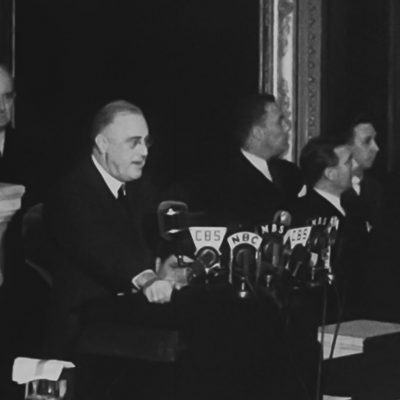
VIDEO: Franklin D. Roosevelt’s Four Freedoms
Although the nation was not yet at war in January 1941, President Franklin D. Roosevelt used his annual message to Congress to proclaim the Four Freedoms as a de facto war standard to one and all.
It was not until Norman Rockwell painted his Four Freedoms that Americans could really understand what they were fighting for and why the Four Freedoms were so important to the country and the world.
This video is a production of Norman Rockwell Museum. © 2018 Norman Rockwell Museum. All Rights Reserved.

VIDEO: Womanpower: the Fight for the Four Freedoms
Rosie the Riveter emerged as an emblem of the working woman during World War II, the center of a campaign aimed at recruiting female workers for defense industries. Visualized in the early 1940s by American illustrators J. Howard Miller and Norman Rockwell, Rosie represented women who entered the workforce in unprecedented numbers during the war as widespread male enlistment greatly diminished the industrial labor force.
This video is a production of Norman Rockwell Museum. © 2018 Norman Rockwell Museum. All Rights Reserved.
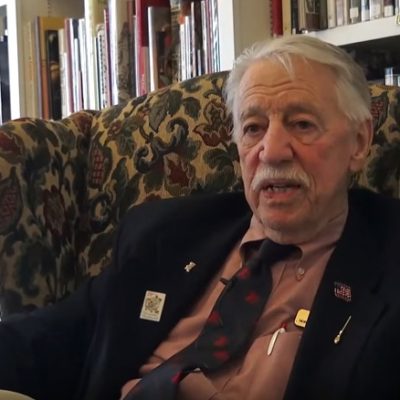
NRM Volunteer George Church on listening to the Four Freedoms speech on the radio in 1941
On November 17, 2015, Norman Rockwell Museum volunteer and former employee, George Church sat down to talk about his experiences listening to a live radio broadcast of President Franklin D. Roosevelt’s “Four Freedoms” speech in 1941 and paying a visit to see the “Freedom Train” in 1943 to witness Norman Rockwell’s “Four Freedom” paintings in person during a nationwide war bond effort to support the United States of America’s efforts in the war.
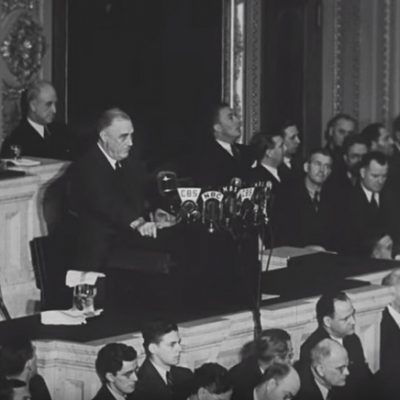
President Franklin Roosevelt January 6, 1941 The Four Freedoms excerpt
Two minute clip of Paramount newsreel footage of President Roosevelt’s 1941 Annual Message to Congress (Film ID 201-823-3-1) synced with audio from the Roosevelt Library Audio Recordings Collection (http://www.fdrlibrary.marist.edu/arch…). Film copyrighted by Sherman Grinberg Film Library (http://www.shermangrinberg.com/).

